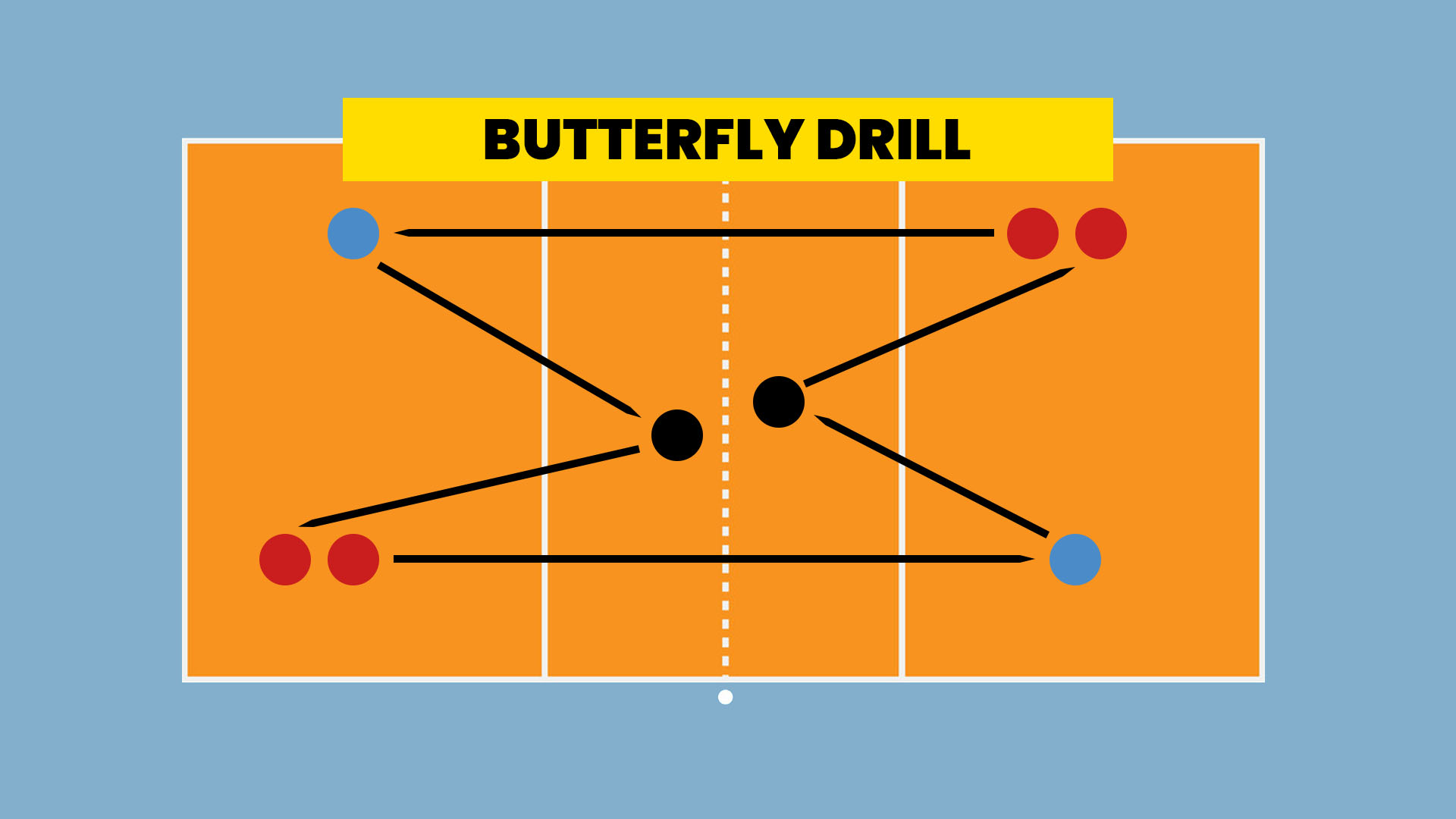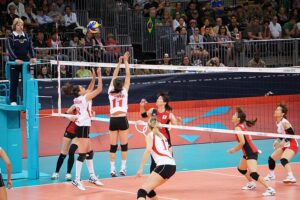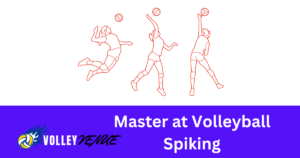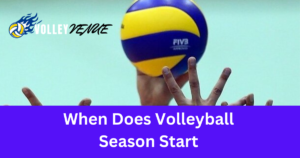Table of Contents
Are you worrying about what is the butterfly drill in volleyball? Don’t worry stay with us, we have explained it very easily for your better understanding.
The butterfly drill is a popular volleyball drill that gets players moving, touching the ball frequently, and working on various skills. It’s named after the butterfly-like shape created by player movement during the drill. The butterfly drill in volleyball is a great warm-up activity that incorporates serving, passing, setting, and transitioning while keeping the action continuous with high energy.
You’ll position players around the court, with servers delivering the ball across the net to passers who pass to targets. Targets then transition to become the next servers, creating a constant flow resembling a butterfly’s motion. This drill allows you to work on specific skills like passing angle or setting by introducing variations and modifications. With its versatility and effective conditioning element, the butterfly drill is a valuable addition to any volleyball practice.
What is the Butterfly Drill?
The butterfly drill is aptly named after the shape created by the players’ movements during the drill. It is designed to keep the action flowing continuously, with players initiating contacts, moving constantly, and maintaining high energy levels. This drill incorporates a lot of running, making it an excellent conditioning exercise while still practicing volleyball skills.
Purpose and Benefits
The butterfly drill serves as an effective warm-up, getting players moving early in practice and allowing them to touch the ball frequently while working on various skills. Its versatility allows coaches to introduce variations and modifications, targeting specific skills like passing angles or setting. The drill’s continuous flow [resembling a butterfly’s motion] and ability to work on multiple skills simultaneously make it a valuable addition to any volleyball practice.
Basic Setup
In the basic setup, players are positioned around the court. Players in the corners start the drill by serving the ball straight across the net to the passing line directly in front of them. The passers then pass the ball to the designated targets, who catch the ball overhead as if setting. After catching the ball, the targets move to the serving line on the same side of the net they were standing on, and the process repeats. Both servers begin simultaneously, but subsequent servers serve whenever the next passer is ready. It is recommended to run through the drill initially with tosses to ensure all players understand their movements and positions.
Executing the Butterfly Drill
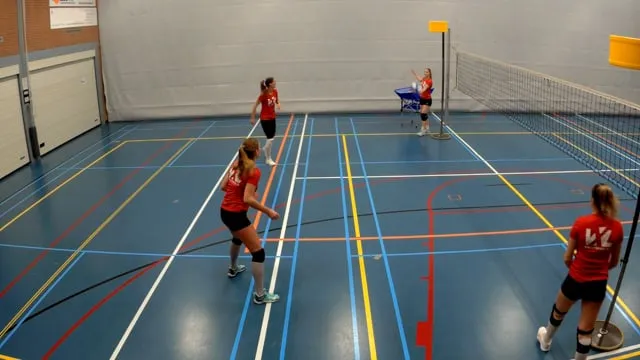
To execute the butterfly drill in volleyball, follow these steps:
Player Positions and Movements
Players in the corners will start the drill by serving the ball straight across the net to the passing line directly in front of them. The passers will then pass the ball to the designated targets. The targets will catch the ball overhead, as if setting, and move to the serving line on the same side of the net they were standing on. Both servers begin simultaneously, but subsequent servers will serve whenever the next passer is ready.
It’s recommended to run through the drill initially with tosses to ensure all players understand their movements and positions. When players are in the target position, they tend to run to the wrong destination, so emphasize that they’ll need to stay on their own side after catching the pass.
Drill Progression
You can progress the drill and touch on every skill depending on the skill level of the players. Instead of just throwing the ball over, you can have them downball it or serve it from behind the service line. Instead of catching the ball, you can have the targets set it, and the passers can transition out and hit the ball. You can continuously add variations to the drill.
Serving Techniques
To work on different serving techniques, you can modify how the ball is delivered over the net. For beginners, have players scoot further into the court and serve from about 10-15 feet back from the net. If players are having control issues, toss the ball over instead of throwing it. To mimic a float serve, soccer throws the ball with both hands overhead. For a topspin serve, bowl the ball one-handed underhand with pace.
You can also have the servers roll their ball to the passing line across the net from them, and then switch directions. This will help players work on passing from different sides of the court, facing a line serve, and controlling the angle of their platform.
Variations and Modifications
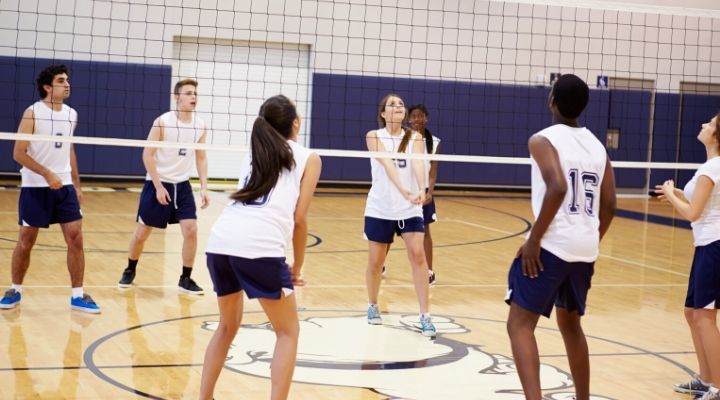
You can introduce various modifications and variations to the butterfly drill to cater to different skill levels and focus on specific areas. Here are some common adjustments:
Difficulty Adjustments
If players are having trouble controlling the ball, make the drill beginner-friendly by having them scoot further into the court and serve from about 10-15 feet back from the net. If control issues persist, toss the ball over instead of throwing it. To mimic a float serve, soccer throws the ball with both hands overhead, or for a topspin serve, bowl it one-handed underhand with pace.
Additional Skill Integration
You can add requirements for the passers, such as having them pass to themselves before passing to the target or pass to themselves and then set to the target. This drill allows you to progress and touch on every skill, depending on the players’ skill level. Instead of just throwing the ball over, you can have them down-ball it or serve from behind the service line. Instead of catching the ball, have the targets set it, and the passers can transition out and hit the ball.
Conditioning Emphasis
Essentially, butterfly drills are meant to keep the action rolling, with player-initiated contacts, constant movement, high energy, and lots of running. It makes a great conditioning drill that still incorporates volleyball skills. The constant movement and running required in this drill encourages better ball control, as players need to pass accurately to their targets, or their teammates won’t be happy with shanked balls.
Coaching Tips and Pointers
Error Correction
When running the butterfly drill, providing meaningful feedback beyond just knowledge of the outcome can be challenging. To effectively correct errors, you want players challenging each other – servers should specifically try to make it difficult for passers. Aim for an error rate that disrupts the flow, as pretty practices don’t necessarily translate to effective skill development. Lower-level players may benefit more from this drill due to their lack of control, creating a bigger challenge for passers.
Motivation and Engagement
The inherent objective in butterfly drills is often to get a certain number of passes to the target while keeping the drill flowing smoothly. This can lead players to make serves as easy and direct as possible for the passers, undermining the drill’s purpose. To maintain engagement, consider introducing competitive elements or goals that motivate players to challenge each other rather than taking the easiest route.
Skill Development Focus
While butterfly drills incorporate various skills, the repetitions may lack game-like pressure, limiting skill development. To address this, introduce modifications that integrate additional skills, such as having passers pass to themselves before passing to the target, or having targets set the ball for passers to transition and hit. Adjusting the difficulty level by changing serving techniques or distances can also help target specific areas for improvement.
Conclusion
The butterfly drill in volleyball is a versatile and engaging exercise that effectively combines skill development with conditioning. Its continuous flow and butterfly-like player movements create a high-energy environment, allowing athletes to practice various techniques while maintaining a game-like intensity. By introducing modifications and variations, coaches can tailor the drill to target specific skills and challenge players at different levels.
While the butterfly drill is an excellent warm-up and skill-building tool, it is essential to approach it with a game-like mindset. Coaches should encourage players to challenge each other, maintain a competitive spirit, and strive for accuracy under pressure. By incorporating additional skills, adjusting difficulty levels, and fostering. In a competitive environment, the butterfly drill can become a comprehensive training tool that prepares athletes for the demands of actual gameplay. I hope after reading this article you have understood what is the butterfly drill in volleyball

